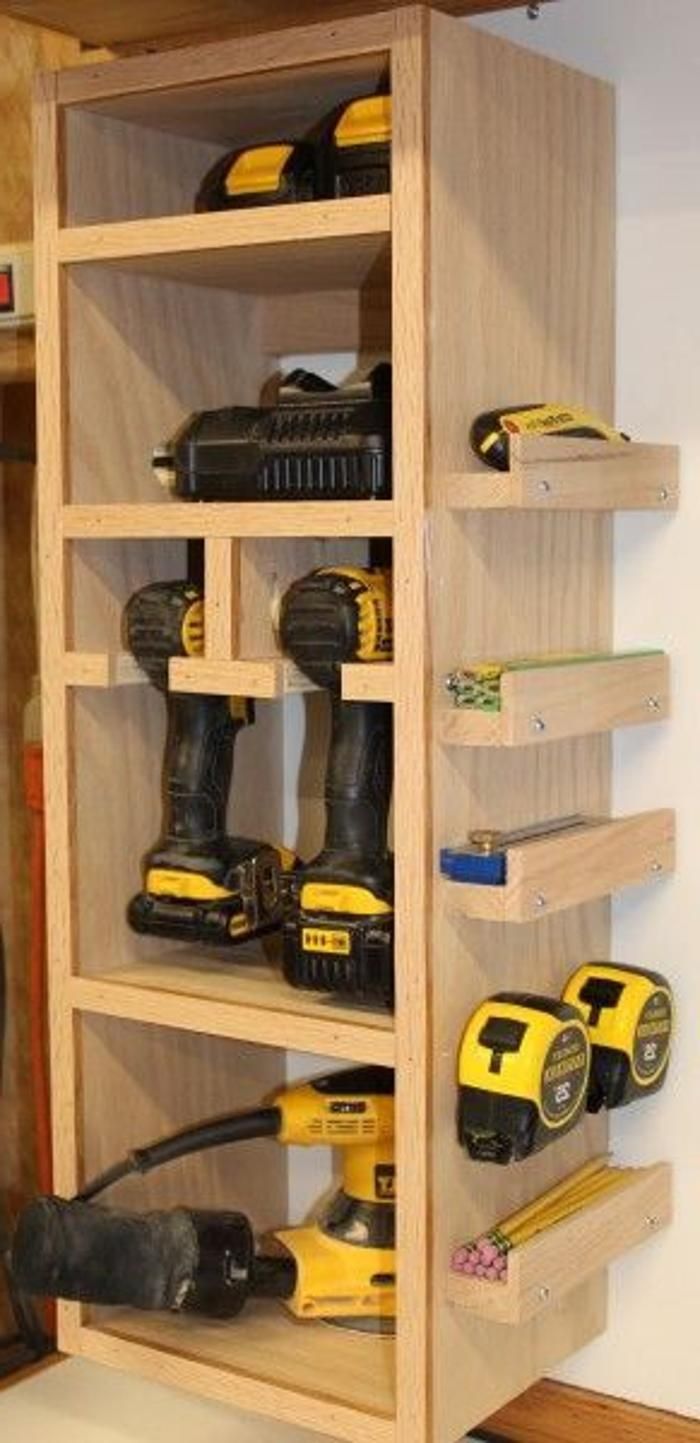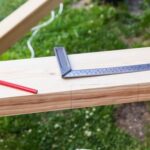Woodworking is a craft that requires meticulous attention to detail and precision to achieve professional-quality results. One essential tool in the woodworker’s arsenal that contributes significantly to this precision is the jointer. A jointer is a woodworking machine designed to create flat, smooth surfaces on the edges of boards, allowing for seamless joins and precise measurements during woodworking projects.
A jointer works by removing small amounts of material from the surface of a board, ensuring that it is perfectly flat and square. This process helps align the edges of multiple boards for seamless gluing or joining, ultimately leading to stronger and more visually appealing finished products. Whether you are crafting furniture, cabinets, or other woodworking projects, a jointer plays a crucial role in achieving professional results.
There are different types of jointers available in the market, ranging from compact benchtop models suitable for small workshops to large stationary machines ideal for larger woodworking operations. Understanding the mechanics of how a jointer works and the benefits it provides can help woodworkers make informed decisions when selecting the right tool for their specific needs.
In the following sections, we will delve deeper into the intricacies of using a jointer effectively and safely to elevate your woodworking skills to new heights.
Definition of a Jointer and Its Role in Woodworking
A jointer for woodworking is an essential tool that helps in achieving flat surfaces, straight edges, and perfect angles when working with wood. This machine is used to flatten one face of a board and square up one edge, making it an indispensable tool in woodworking shops. By utilizing a jointer, woodworkers can create precise cuts and seamless joints, ensuring high-quality craftsmanship in their projects.
What Is a Jointer?
A jointer, also known as a surface planer, is a woodworking tool designed to create a flat surface on the face or edge of a board. It consists of a flatbed and a rotating cutter head with multiple sharp blades that remove small amounts of material with each pass.
The primary function of a jointer is to make sure that the surface of the wood is smooth, even, and free from imperfections such as twists, bows, or cupping. This ensures that the boards will fit together seamlessly when assembling furniture or other woodworking projects.
The Role of a Jointer in Woodworking
The main role of a jointer in woodworking is to prepare the wood by making it flat and square before moving on to other power tools like table saws or routers. By starting with flat faces and straight edges, woodworkers can ensure that their projects will have clean lines and tight joints.
A jointer also helps in reducing waste by allowing craftsmen to use every part of the board efficiently without having to account for any irregularities. In essence, a jointer acts as the foundation for creating well-crafted pieces that showcase precision and attention to detail.
Types of Jointers
A jointer is an essential tool in woodworking, used to flatten, straighten, and smooth out the edges of rough lumber before further processing. When it comes to jointers, there are two main types to consider: benchtop jointers and stationary jointers. Each type has its own set of features, advantages, and limitations that cater to different woodworking needs.
Benchtop Jointers
Benchtop jointers are compact and lightweight machines designed for small woodworking shops or hobbyists with limited space. These portable jointers usually have a cutting width ranging from 6 to 8 inches, making them ideal for working on smaller pieces of wood.
Benchtop jointers are convenient for occasional use or for those who need to move their tools around frequently. However, due to their smaller size, benchtop jointers may be less powerful than stationary models and might have limitations when working on wider boards.
Stationary Jointers
On the other hand, stationary jointers are larger, heavier-duty machines commonly found in professional woodworking shops. Stationary jointers offer wider cutting widths, typically ranging from 8 to 16 inches or more, allowing for more versatility when working with larger boards or panels.
These robust jointers are designed for heavy-duty use and can handle more substantial stock with ease. While they require a dedicated workspace due to their size and weight, stationary jointers provide increased accuracy and stability compared to benchtop models.
How Does a Jointer Work
A jointer is a crucial tool in woodworking that is used to create flat surfaces along the edges of a board. It works by using a rotating cutter head with multiple sharp blades that remove material from the surface of the wood as it is passed over the machine. The infeed table allows you to adjust how much material is removed, while the outfeed table ensures that the board remains level throughout the process.
The key component of a jointer is the fence, which acts as a guide to keep the board straight and at a consistent angle as it moves across the cutter head. By running one face of the board along the fence and then flipping it over to run the newly flattened face against the fence, you can achieve perfectly smooth and straight edges for your woodworking projects.
One important thing to keep in mind when using a jointer is to make sure that your boards are free of any defects or imperfections before running them through the machine. Knots, cracks, or bumps can cause issues with the cutting process and result in uneven edges. Additionally, always remember to use push blocks or sticks to keep your hands at a safe distance from the cutter head during operation.
| Jointer Mechanics | Explanation |
|---|---|
| Cutter Head | Rotating blades that remove material from wood |
| Fence | Guides board along for straight and smooth edges |
| Infeed/Outfeed Tables | Adjustable tables for material removal and level support |
Benefits of Using a Jointer in Woodworking Projects
The benefits of using a jointer in woodworking projects are numerous and can greatly enhance the quality and precision of your finished piece. A jointer is a crucial tool for creating flat surfaces on lumber, ensuring that edges are straight and square for seamless joins. By using a jointer, woodworkers can achieve more professional results and improve the overall aesthetics of their projects.
One of the primary benefits of using a jointer is its ability to create smooth and even surfaces on wood. This is essential for tasks such as edge joining, where pieces of wood need to be aligned perfectly to create a seamless bond. Without a jointer, achieving these precise surfaces can be challenging and time-consuming. Additionally, using a jointer can help eliminate imperfections such as warping or bowing in lumber, resulting in a more polished final product.
Another advantage of using a jointer in woodworking projects is its efficiency in creating uniform thickness throughout the wood. By flattening one face of the board first with a jointer, you can then easily adjust the thickness planer to remove an equal amount of material from the opposite face. This ensures consistency in thickness across all pieces of wood used in your project, leading to better stability and structural integrity.
| Benefit | Description |
|---|---|
| Smooth Surfaces | Creates even and smooth surfaces on wood for seamless joins |
| Uniform Thickness | Ensures consistent thickness across all pieces for better stability |
Common Features to Look for in a Quality Jointer
When investing in a jointer for woodworking, it is essential to be knowledgeable about the common features that indicate a high-quality tool. A quality jointer can make a significant difference in the precision and efficiency of your woodworking projects. Here are some key features to look for when selecting the right jointer for your workshop:
- Cutter Head: One of the most important features of a quality jointer is a solid cutter head. Look for helical cutter heads, which provide smoother cuts and reduce tear-out compared to straight knife cutter heads.
- Bed Length: The length of the jointer bed determines how long of a board you can accurately flatten. Opt for a jointer with a longer bed if you primarily work with longer boards.
- Fence Adjustability: A stable and adjustable fence is crucial for achieving precise cuts and maintaining accuracy. Look for a jointer with easy-to-adjust fences that lock securely in place.
- Dust Collection: Woodworking can create a lot of dust, so choosing a jointer with an effective dust collection system will help keep your workshop cleaner and improve visibility while working.
- Power and Motor Size: Make sure to consider the power and motor size of the jointer you are looking at. Higher horsepower motors will handle harder woods more effectively, while lower horsepower may struggle with large or dense boards.
By paying attention to these key features when selecting a jointer, you can ensure that you have a reliable tool that will enhance your woodworking projects and help you achieve professional results. Remember that investing in a quality jointer may require spending more upfront but will ultimately save time and effort in the long run.
Step-by-Step Guide on How to Use a Jointer Safely
A jointer is an essential tool in woodworking that helps create flat surfaces, straight edges, and to square up board edges. Knowing how to properly use a jointer ensures safety and accuracy in your woodworking projects. In this step-by-step guide, we will walk you through the process of using a jointer safely.
First and foremost, it is crucial to ensure that your jointer is set up correctly before starting any project. This includes checking the fence’s alignment, ensuring the blades are sharp and properly adjusted, and that all safety features are in place. Once your jointer is set up correctly, you can begin by selecting the board you want to work on.
Next, adjust the infeed table according to the thickness of the board you are working on. It’s essential to start with light passes until you get comfortable with the process. Remember always to push the board against the fence while applying downward pressure towards the outfeed table. This ensures stability and prevents kickback during operation.
Lastly, make sure to wear appropriate safety gear such as goggles and ear protection while operating a jointer. Always keep your hands away from the cutting area and never attempt to joint small or narrow pieces of wood as it can be unsafe. By following these steps carefully, you can use a jointer safely and effectively in your woodworking projects.
Tips and Techniques for Getting the Most Out of Your Jointer
When it comes to woodworking, one of the essential tools that can help you achieve precise and professional results is a jointer. But knowing how to use a jointer effectively can make all the difference in your woodworking projects. In this section, we will discuss some tips and techniques for getting the most out of your jointer.
First and foremost, it’s crucial to ensure that your jointer blades are sharp. Dull blades can result in rough cuts and tear-out, leading to subpar results. Regularly check the sharpness of your blades and sharpen them when needed to maintain optimal performance.
Another important tip is to pay attention to the grain direction of the wood when using a jointer. Always feed the wood against the rotation of the cutter head for better results. This technique will help prevent tear-out and ensure smoother cuts on your workpiece.
Furthermore, mastering proper technique is key to getting the most out of your jointer. Learn how to apply consistent pressure when feeding wood through the machine and maintain steady control over the workpiece. Practice makes perfect, so take your time to familiarize yourself with using a jointer effectively for different woodworking tasks.
By following these tips and techniques, you can maximize the capabilities of your jointer and achieve professional results in your woodworking projects. Remember that practice, patience, and attention to detail are essential when using a jointer for woodworking.
Jointer vs Planer
A jointer and a planer are two essential woodworking tools that serve different purposes in the woodworking process. While some may confuse the two, it is important to understand the key differences between a jointer and a planer to effectively use them in your projects.
Below are some key distinctions between a jointer and a planer:
- Function: A jointer is primarily used to create a flat surface on the face of a board, while a planer is used to create boards of consistent thickness.
- Operation: A jointer flattens one face of a board and squares one edge, allowing you to then run it through a planer to achieve consistent thickness. On the other hand, a planer will only make your board thinner or thicker but will not ensure that the face is perfectly flat.
- Usage: Jointers are typically used first in the woodworking process to flatten one side of rough lumber before sending it through a planer for consistent thickness. Planers are then used after jointing to make both faces parallel and boards evenly thick.
When considering whether to use a jointer or a planer for your woodworking project, it is important to assess the specific needs of your project. If you need to ensure that one side of your board is perfectly flat and square before moving on to thickness planning, then using a jointer would be necessary. However, if you need boards of consistent thickness but do not require perfectly flat surfaces, then utilizing a planer would be ideal.
Conclusion
In conclusion, the jointer is an essential tool for woodworking that plays a crucial role in achieving precision and accuracy in projects. Whether you are a seasoned woodworker or just starting out, understanding what a jointer is and how to use it effectively can greatly enhance the quality of your work.
By carefully selecting the right type of jointer for your needs, whether it be a benchtop or stationary model, you can ensure that your woodworking projects meet the highest standards.
A jointer not only helps in flattening and straightening edges of lumber but also ensures that surfaces are smooth and ready for further woodworking processes. The benefits of using a jointer include saving time, improving efficiency, and producing professional-looking results. With features such as adjustable tables, cutter heads, and safety mechanisms, a quality jointer can aid in creating seamless joints and precise cuts.
In the world of woodworking tools, the jointer stands out as a versatile and invaluable asset for any woodworker. Understanding how to operate a jointer safely, recognizing its differences from a planer, and implementing proper techniques can make all the difference in achieving flawless finishes on your projects. So, next time you embark on a woodworking endeavor, consider the value that a jointer brings to the table and how it can elevate the craftsmanship of your creations.
Frequently Asked Questions
What’s the Difference Between a Planer and a Jointer?
A planer and jointer are both tools used in woodworking, but they serve different purposes. A jointer is typically used to flatten the face of a board and create a straight edge, while a planer is used to create boards of consistent thickness.
Do I Need a Jointer for Woodworking?
Whether or not you need a jointer for woodworking depends on the type of projects you are working on and your skill level. If you frequently work with rough lumber that needs to be flattened and squared, then a jointer may be a valuable tool in your workshop.
What Is the Most Common Use for a Jointer?
The most common use for a jointer is to prepare wood for further woodworking projects by flattening one face of a board and squaring up an adjacent edge. This process ensures that the wood is straight, flat, and ready for accurate joinery work.

Hi everyone! I’m a woodworker and blogger, and this is my woodworking blog. In my blog, I share tips and tricks for woodworkers of all skill levels, as well as project ideas that you can try yourself.





